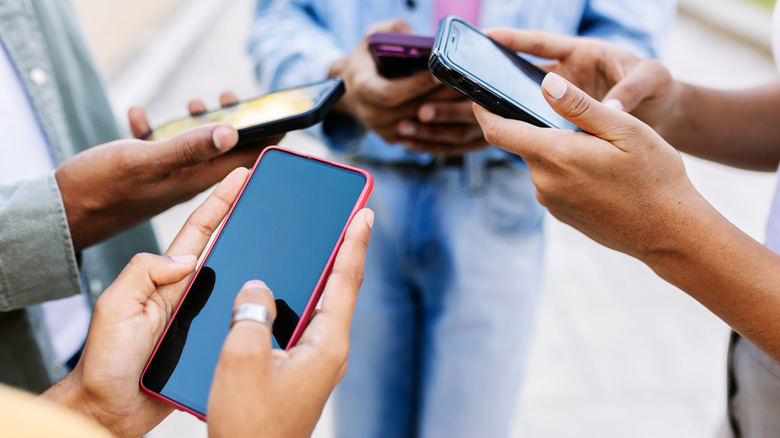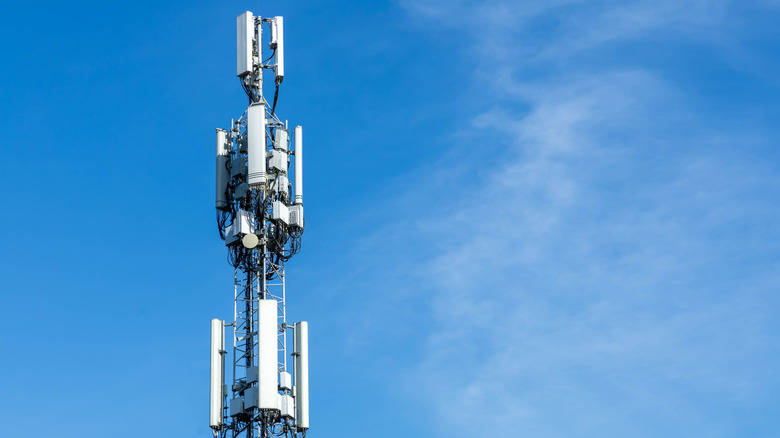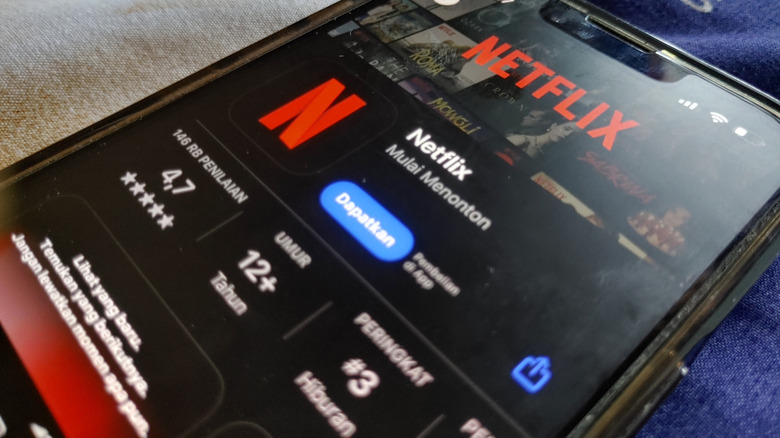Thinking Of Switching Your Cell Phone Carrier? Here Are 5 Things You Need To Know
Switching cell phone carriers is such a common occurrence in the industry that it is often referred to as "churn." There are a number of reasons a consumer may switch carriers, including looking for the cheapest cell phone plans, a wider device selection, and more. In addition, different carriers offer different types of service.
For example, Verizon has built a reputation for having the best coverage in the U.S., although it doesn't always have the fastest speeds. In contrast, its main competitors, AT&T and T-Mobile, often win awards for having faster network speeds, but customers may experience more dead spots, especially in rural areas.
While carriers often run specials designed to lure customers from competing networks, especially around the release of flagship devices from popular manufacturers, choosing a carrier is rarely just a matter of price. Add in the inconvenience associated with actually making the switch, and it quickly becomes apparent that a range of factors should be considered before making the switch.
Coverage
The single most important factor when considering whether to switch carriers is coverage. A cell phone doesn't do any good if it doesn't have coverage. While each of the top U.S. carriers generally provides good coverage in well-populated areas, rural areas can still see significant differences, and even populated areas can still surprise users with dead spots.
Another factor you should consider when comparing coverage is the performance each carrier offers in the areas you live, work, or travel. Different carriers use different frequencies, or spectrum, to power their networks. As a general rule, the lower the frequency the better the coverage, providing both range and building penetration. As the frequency goes higher, however, the coverage goes down but the speed and performance go up significantly. This is especially true with the fastest flavors of 5G, such as 5G Ultra Capacity and 5G Ultra-Wideband.
Because of these variables, it is important to determine what type of coverage is best for you: the widest coverage that may offer slower speeds, or the fastest coverage that may occasionally have some gaps. These differences explain why T-Mobile took top honors for having the fastest network in Ookla's United States Speedtest Connectivity Report H1 2025, while Verizon took the top spot for having the best overall coverage.
Phone and network bands
Network bands also play a direct role in what phones may be available to you. Because different carriers use different spectrum for their networks, manufacturers need to build their phones to support specific bands and carriers.
This can be especially problematic when purchasing a phone manufactured for and sold in another region. The Fairphone, for example, is a phone that has gained popularity due to its modular nature and the ability to upgrade and improve it over time.
Because Fairphone is based in Europe, it is manufactured primarily to operate on the spectrum bands EU carriers use. Because T-Mobile uses some of the same bands as EU carriers, there is a version of the Fairphone that will work on T-Mobile's U.S. network, but the company warns that it is not optimized for AT&T or Verizon. As a result, even if the phone may work with those networks, it will likely not be able to take advantage of certain features or offer the best performance.
When deciding whether to switch carriers, if you plan to bring your existing phone to the new carrier, confirming that it will work and is fully supported is an important step.
Plan costs and data limits
Each of the three national U.S. carriers offers plans with unlimited data, but they still differ in other ways.
For example, each carrier offers different amounts of hotspot data, for those times you need to connect your laptop or tablet and use your phone's data plan. In addition, different carriers offer different price lock guarantees, with T-Mobile offering a five-year guarantee, while Verizon only offers a three-year guarantee.
Even among their unlimited data plans, carriers can differ in how much of that data is premium 5G or 4G data, before the plan falls back to slower 3G speeds, while the most expensive plans often feature unlimited premium data.
Another differentiating factor may be how much hotspot data is included when connecting a computer to your phone via USB tethering. For example, on lower-tier plans, Verizon includes no hotspot or limited hotspot data, while its top-tier plan offers unlimited hotspot data. The same is true for T-Mobile, although AT&T bucks the trend by including a small amount of hotspot data on its cheapest plan.
Ultimately, it is important to pick the carrier that offers the combination of data, speeds, and price point that matches your needs and budget.
Compare the perks
A popular way for carriers to combat churn is to bundle various perks with their plans. T-Mobile has offered Netflix as a bundled perk for years, while Verizon offers Netflix, as well as Disney+, Hulu, ESPN, Apple One, YouTube Premium, and more.
Beyond media packages, T-Mobile also offers users a free bank account that pays a higher interest rate on balances than traditional banks.
Another feature that cell phone companies are increasingly leveraging is cellular-based home internet. Instead of providing internet via a traditional fiber or wired connection, the company will provide a router that accesses the same network that your phone does. In areas that have strong 5G coverage, cellular home internet can provide a compelling alternative to traditional broadband. Verizon and T-Mobile home internet, in particular, is often cheaper when bundled with a cell phone plan.
Such perks offer clear value to the carriers. With each perk that customers sign up for, those customers become more reliant on the carrier, making it more difficult to switch to a competitor. At the same time, those perks can result in significant savings, provided the perks are important to you.
International support
Another important point of comparison for many users is international support, especially if you travel frequently for business or pleasure. Traditionally, international travelers have had to purchase a SIM card in their destination country or region, along with a local plan, in an effort to avoid costly roaming fees.
For a number of years, T-Mobile reigned supreme among U.S. carriers, offering unlimited talk and text in Canada and Mexico, as well as unlimited text and data in more than 200 countries, although only a limited amount of that data at the fastest speeds.
Recently, however, Verizon has managed to leapfrog T-Mobile, offering not only text and data but also unlimited calling in more than 200 countries. Much of this is thanks to Verizon's adoption of industry standards, bringing it more in line with the rest of the wireless industry. In years past, Verizon's 2G and 3G network was based on proprietary CDMA technology, while the majority of the world's carriers built their networks using open GSM technology. With the switch to 4G and 5G, Verizon has switched to using the same standards as much of the rest of the industry, meaning there is a much greater likelihood of its phones working when roaming on international networks, making it possible for Verizon to strike roaming deals for its customers.
Switching carriers can be both exciting and potentially stressful, but carefully considering the various factors involved can lead to a smooth transition. Understanding what each carrier offers can help you make the best choice and choose the option that best fits your needs and circumstances.





